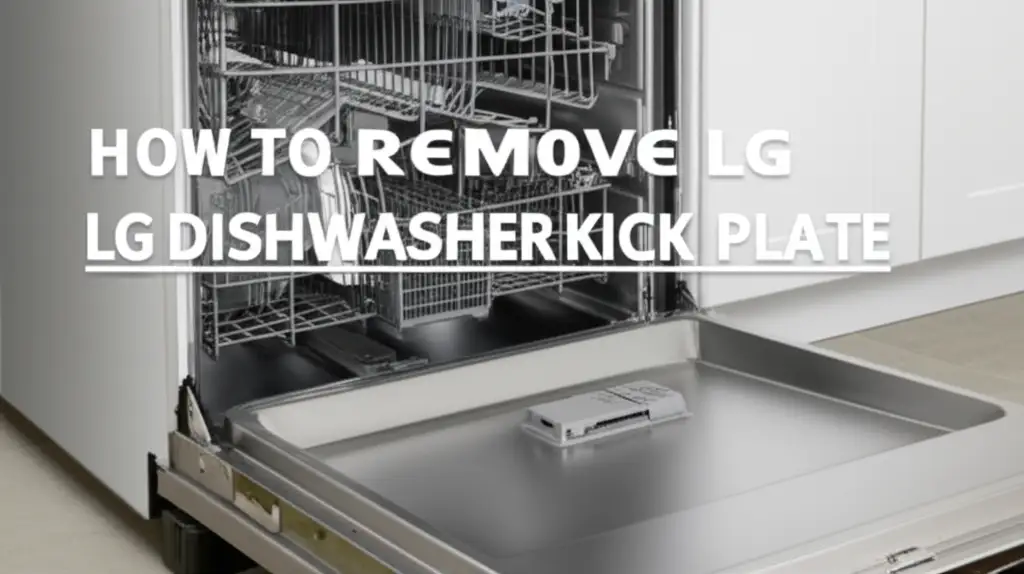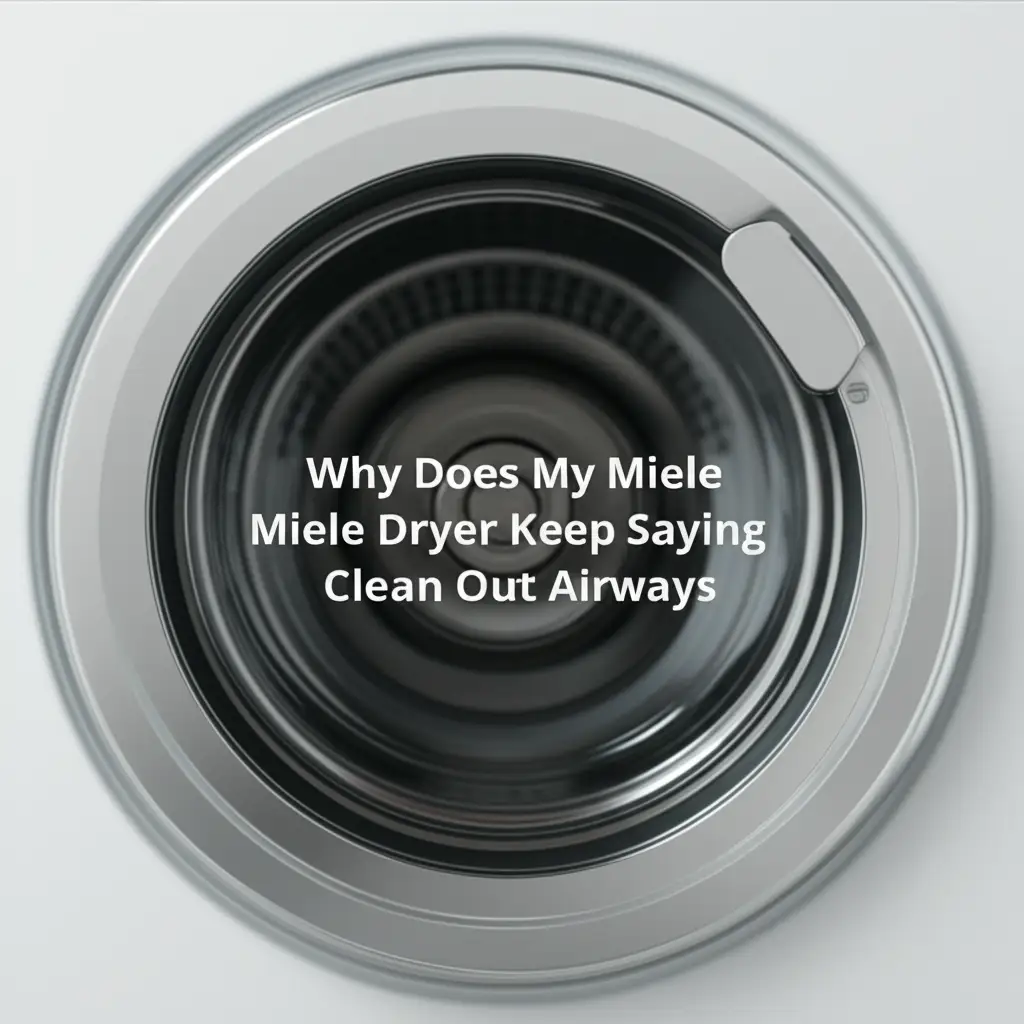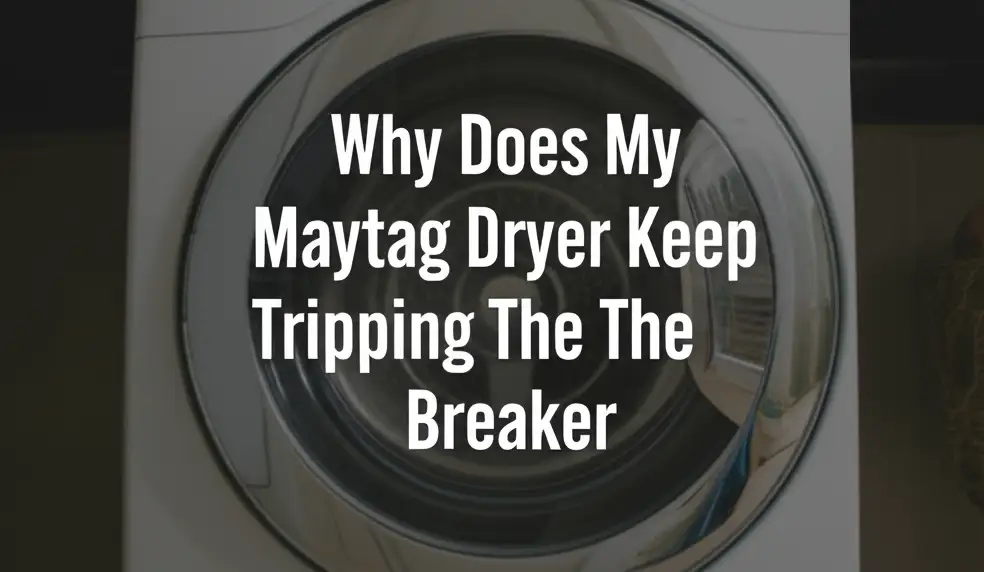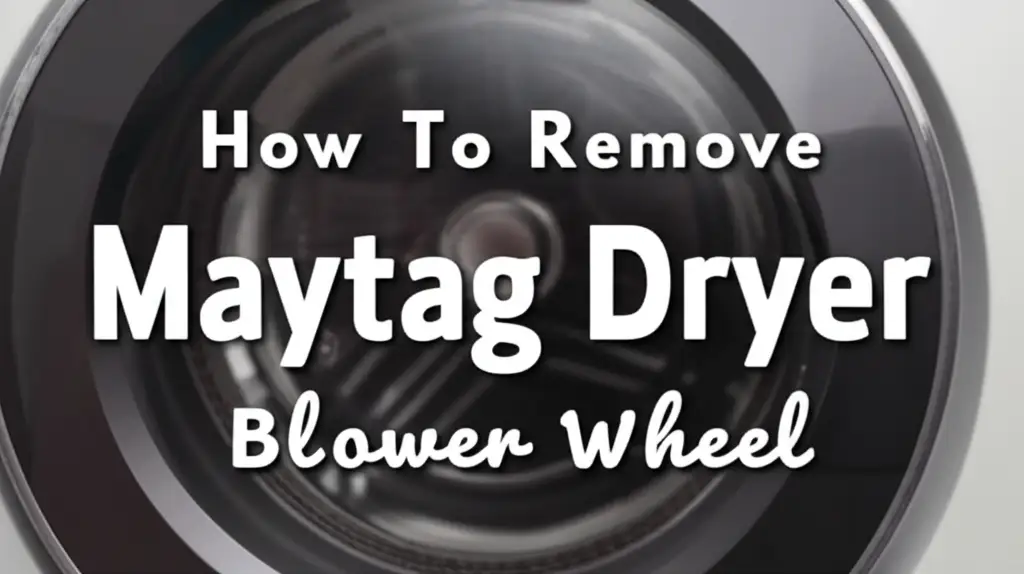· Davia Murnell · Appliance Repair, Miele Troubleshooting · 16 min read
Why Is My Miele Dryer Stopping Before The End Of Cycle
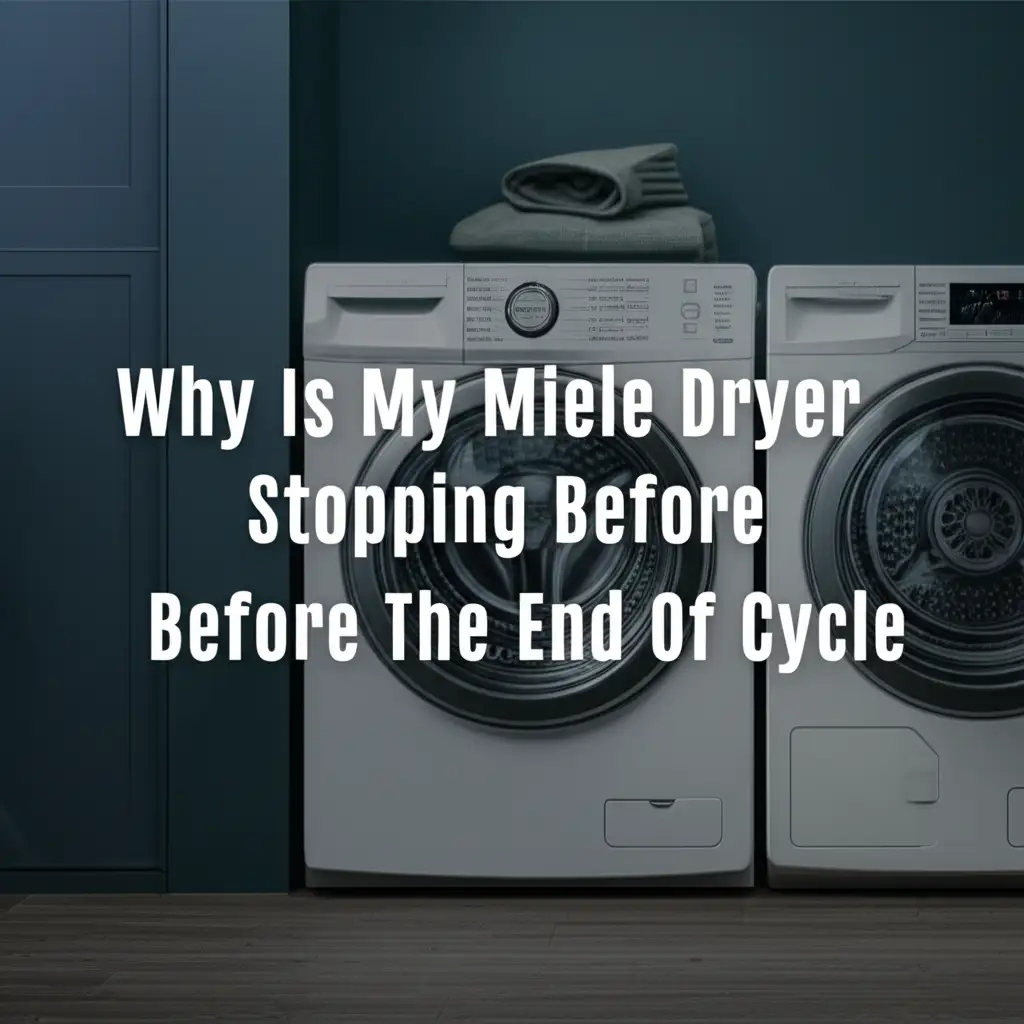
Why Your Miele Dryer Stops Before Cycle End
Have you ever found your laundry still damp, even after a full dryer cycle? It is frustrating when your Miele dryer stops before the end of cycle. This common problem affects many homeowners. It leaves clothes wet and adds to your chores.
I understand how vital a working dryer is for a smooth household routine. This article will help you understand why your Miele dryer might be cutting cycles short. We will explore the most common culprits. You will find practical steps to troubleshoot and fix these issues yourself. My goal is to get your Miele dryer running full cycles again.
Takeaway
- Check airflow: Clear lint filters and dryer vents.
- Clean sensors: Ensure moisture sensors are free of residue.
- Inspect power: Verify the power supply and circuit breaker.
- Look for error codes: Understand what your Miele dryer is telling you.
- Consider component failure: Identify signs of a faulty heating element or thermal fuse.
Your Miele dryer stops before the end of its cycle often due to airflow restrictions from clogged vents or lint filters, faulty moisture sensors, or overheating. Power supply issues, worn out components like the thermal fuse, or error codes can also interrupt the drying process. Addressing these areas helps restore full cycle operation.
Airflow Obstructions: A Common Culprit
A major reason your Miele dryer stops before the end of cycle is poor airflow. Dryers need good air circulation to dry clothes and operate safely. When airflow is blocked, heat builds up inside the drum. This triggers safety mechanisms. The dryer then shuts down early to prevent overheating.
Clogged Lint Filter
The first place to check is the lint filter. This filter traps lint from your clothes. A dirty filter blocks air movement. I always clean my lint filter after every load. This simple step can prevent many dryer issues. Make sure the filter is completely clean before starting a new cycle.
Blocked Dryer Vent Hose
Beyond the lint filter, the dryer vent hose can also become clogged. Lint travels from the dryer drum into this hose. Over time, it can build up inside the hose. This blockage restricts airflow even more. It is a fire hazard too.
You should disconnect the hose from the dryer. Then, clean out any lint inside. You can use a long brush or a vacuum cleaner. This helps restore proper air circulation. Ensure the hose is not kinked or crushed.
External Vent Obstruction
Sometimes, the problem is outside your home. The dryer vent terminates on an exterior wall. Birds can build nests inside the vent hood. Other debris might also block it. I once found a wasp nest in my own dryer vent.
Go outside and check the vent cap. Make sure it is clear of any obstructions. Clean the vent area with a brush if needed. Regular cleaning of all parts of your dryer’s ventilation system is vital for its efficiency and safety. For a deeper dive into maintenance, read our guide on how to clean your dryer and learn more about how to clean dryer vent.
Moisture Sensor Issues: Misjudging Dryness
Your Miele dryer uses moisture sensors to determine if clothes are dry. These metal bars sit inside the dryer drum. They detect how much moisture is left in the laundry. When the sensors detect dry clothes, the dryer stops. If these sensors are dirty or faulty, they can misread the moisture levels. This makes your Miele dryer stop before the clothes are actually dry.
Understanding Moisture Sensor Function
Miele dryers are smart machines. They use technology to save energy. The moisture sensors work by sensing electrical conductivity through wet clothes. Wet clothes conduct electricity better than dry ones. The dryer uses this difference to decide when to stop the cycle. This ensures clothes are not over-dried or under-dried.
However, this system relies on clean sensors. If they get covered in fabric softener residue or lint, they cannot read moisture correctly. This is a common issue I have seen. The dryer then thinks clothes are dry when they are still damp.
Cleaning the Sensors
Cleaning the moisture sensors is a simple task. First, locate them inside the dryer drum. They usually look like two or more metallic strips. They are typically near the lint filter. You will need a soft cloth and rubbing alcohol.
Wipe down the metallic strips firmly. Remove any film or residue. Do not use abrasive cleaners. They can damage the sensors. After cleaning, let them dry completely before running a cycle. This often fixes early stopping issues. Regular cleaning is a good habit.
When Sensors Go Bad
Sometimes, cleaning does not fix the problem. This means the moisture sensors might be faulty. Sensors can wear out over time. They might stop sending accurate signals to the dryer’s control board. If you suspect faulty sensors, it is best to consult the Miele service manual or a professional. Replacing them might be necessary.
A dryer that stops too early due to moisture sensor issues wastes time and electricity. It also means you have to restart cycles. Keeping these sensors clean ensures your Miele dryer works as designed. This helps you get perfectly dry clothes every time.
Overheating Protection: Safety Shutdowns
Miele dryers are built with safety in mind. They have components that protect against overheating. When the dryer gets too hot, it automatically shuts down. This prevents damage to the appliance and reduces fire risk. If your Miele dryer stops before the end of cycle, overheating is a strong possibility.
Thermal Fuse Activation
One key safety component is the thermal fuse. This is a small, inexpensive part designed to blow if the dryer’s temperature gets too high. Once it blows, it creates an open circuit. This stops power to the heating element or the entire dryer. A blown thermal fuse means there was a serious overheating event.
A thermal fuse usually blows due to restricted airflow. Lint blockages are the main cause. Once the fuse blows, it cannot be reset. You must replace it. Before replacing, identify and fix the underlying cause of overheating. Otherwise, the new fuse will blow again.
Faulty Thermostat
Another component involved in temperature control is the thermostat. Dryers have one or more thermostats. These parts regulate the temperature inside the dryer. They cycle the heating element on and off. If a thermostat fails, it might not open or close correctly. This can cause the dryer to get too hot.
A faulty thermostat can trick the dryer into thinking it is overheating, even when it is not. This leads to early shutdowns. You can test a thermostat with a multimeter for continuity. A bad thermostat needs replacement. This is a job for someone comfortable with appliance repairs.
Restricted Airflow and High Heat
As mentioned, poor airflow is a leading cause of overheating. When air cannot move freely, heat gets trapped. This makes the heating element work harder. It also raises the overall temperature inside the drum and surrounding components. The safety features then activate.
Regular maintenance of your dryer’s vents and filters is crucial. It ensures proper airflow. This prevents overheating and protects the thermal fuse and thermostats. Keeping your dryer well-maintained saves you money on repairs and keeps your home safe. Learn more about maintaining your appliance with our guide on how to clean your dryer machine.
Power Supply Issues: Interrupted Cycles
A dryer needs a stable and sufficient power supply to operate correctly. If your Miele dryer stops before the end of cycle, a power problem could be the cause. It is not always an appliance issue. Sometimes, the power coming into the dryer is inconsistent or too low.
Tripped Circuit Breaker
Dryers draw a lot of electricity. They usually operate on a dedicated 240-volt circuit. If the circuit becomes overloaded, the circuit breaker will trip. This is a safety feature. It cuts off power to prevent electrical fires. A tripped breaker means your dryer loses power mid-cycle.
Check your home’s electrical panel. Find the breaker labeled for your dryer. If it is in the “off” or middle position, it has tripped. Flip it completely to the “off” position, then firmly back to “on.” If it trips again immediately, you have an electrical issue needing a licensed electrician. Do not ignore repeated trips.
Loose Power Cord or Outlet Issues
The power cord connects your Miele dryer to the wall outlet. Check this connection. Make sure the cord is fully plugged into the outlet. A loose connection can cause intermittent power. This can make the dryer stop unexpectedly. Also, inspect the cord for any signs of damage. Frayed or melted spots mean it needs replacement.
Sometimes, the issue is with the wall outlet itself. Outlets can wear out over time. If the prongs of the dryer plug feel loose in the outlet, the outlet might need replacement. This is a job for a qualified electrician. Never try to fix an outlet if you are not sure what you are doing.
Electrical Fluctuations
Power fluctuations can also affect your dryer. These are brief drops or surges in electrical current. They can come from outside your home or from other large appliances. Miele dryers have sensitive electronics. They can be affected by unstable power. They might shut down to protect their components.
While you cannot control external power fluctuations, ensure your home’s wiring is up to code. If power issues are frequent, consider installing a whole-house surge protector. This can shield your valuable appliances. Proper power is essential for smooth dryer operation.
Component Failures: Deeper Mechanical Problems
Beyond airflow and power, internal components can fail. These parts are critical for heating, spinning, and controlling the dryer cycle. If one of these components stops working correctly, your Miele dryer will stop before the end of cycle.
Faulty Heating Element
The heating element is responsible for generating heat. It is a long, coiled wire that glows red when working. If the heating element burns out, your dryer will tumble but not heat. The clothes will remain wet. The dryer might run for a while, then stop. It might do so because it cannot reach the required temperature.
You can often test a heating element for continuity with a multimeter. No continuity means it is broken and needs replacement. This part is usually accessible from the back of the dryer. Replacing it is a common repair for many dryer types.
Worn Drive Motor
The drive motor spins the dryer drum and often powers the blower fan. If the motor is failing, it might struggle to turn. It could overheat and shut down prematurely. You might hear unusual noises like humming or grinding before it stops. Sometimes, the motor might start but not have enough power to complete the cycle.
A failing motor might also trip the circuit breaker. This happens if it draws too much current. If your dryer tries to start but then quickly stops, suspect the motor. Replacing a drive motor is a more involved repair. It may require a professional.
Malfunctioning Control Board
The control board is the “brain” of your Miele dryer. It manages all functions, including cycle times, temperature, and motor operation. If the control board malfunctions, it can send incorrect signals. It might tell the dryer to stop before the cycle is complete, even if there is no other issue.
Signs of a faulty control board include erratic behavior. This includes cycles starting randomly or buttons not responding. Sometimes, the display might show strange characters. Control board issues are harder to diagnose and fix. They often require specialized knowledge and a replacement part. This repair is usually best left to a qualified Miele technician.
Error Codes and Diagnostics: Reading Your Miele
Miele appliances are known for their advanced technology. This includes diagnostic systems that display error codes. If your Miele dryer stops before the end of cycle, it might show a specific code. Understanding these codes is key to identifying the problem quickly.
Interpreting Miele Error Codes
Miele dryers use a series of letters and numbers to indicate problems. These codes usually appear on the digital display. Each code points to a specific issue. For example, a code might indicate a heating fault, a sensor error, or an airflow problem. Consult your Miele dryer’s user manual. It contains a full list of error codes and their meanings.
If you do not have the manual, you can often find it online. Search for your specific Miele dryer model number. The manual will guide you on what the code means. It will also offer initial troubleshooting steps. This can save you time and money on a service call.
Running Diagnostic Mode
Some Miele dryers also have a diagnostic mode. This mode allows the dryer to perform self-tests. It can help pinpoint faulty components. The steps to enter diagnostic mode vary by model. Refer to your manual for instructions. Once in diagnostic mode, the dryer might run through various tests. It might also display further codes.
Diagnostic mode is a powerful tool. It helps confirm your suspicions about a specific part. However, be careful when using it. Do not attempt repairs unless you are comfortable and skilled. Incorrect actions can cause further damage.
When to Call a Technician
While error codes provide valuable clues, not all issues are DIY-friendly. If the code points to a complex internal component, like the control board or motor, it is best to call a qualified Miele technician. They have the right tools and expertise. They can diagnose the problem accurately. They can also perform repairs safely.
Do not force your dryer to run if it continues to display error codes. This can worsen the problem. Always prioritize safety. A professional repair ensures your Miele dryer is fixed correctly. It helps it last for many more years.
Maintenance and Prevention: Keeping Your Dryer Running
Preventative maintenance is the best way to avoid your Miele dryer stopping before the end of cycle. Regular care extends the life of your appliance. It also ensures efficient and safe operation. I make sure to follow a maintenance schedule for all my home appliances.
Regular Lint Filter Cleaning
This is the simplest and most important step. Clean the lint filter after every load. This prevents lint buildup and maintains good airflow. A clean filter helps your dryer run efficiently. It also significantly reduces fire risk. Make it a habit. It takes only a few seconds.
Annual Vent Cleaning
Beyond the lint filter, the entire dryer vent system needs annual cleaning. Lint can accumulate inside the ductwork. This includes the flexible hose behind the dryer and the rigid duct leading outside. A blocked vent restricts airflow, causing overheating. This can also damage your dryer.
You can buy vent cleaning kits with long brushes. These kits let you clean the entire vent length. If your vent is very long or difficult to access, consider hiring a professional. They have specialized equipment for thorough cleaning. This improves dryer performance. It also prevents your Miele dryer from stopping early. You can find out more on how to clean other parts of your appliance in our guide to how to deep clean washer and dryer.
Proper Loading Habits
Do not overload your Miele dryer. Overloading restricts airflow inside the drum. This makes clothes take longer to dry. It can also strain the motor and heating element. This leads to premature wear. Your dryer might stop early because it cannot handle the heavy, damp load.
Always follow the manufacturer’s guidelines for load size. Dry similar fabrics together. This helps ensure even drying. Give clothes enough space to tumble freely. This improves drying efficiency. It also prevents your Miele dryer from stopping mid-cycle.
Professional Service Checks
Even with regular DIY maintenance, periodic professional checks are beneficial. A certified Miele technician can spot problems early. They can inspect components that you cannot easily access. They can also perform diagnostic tests. These tests ensure all systems work correctly.
Consider a professional service check every few years. This is especially true if your dryer is older or if you notice any unusual behavior. Early detection of issues can prevent larger, more expensive repairs down the line. It ensures your Miele dryer continues to perform optimally.
FAQ Section
Why does my Miele dryer stop after a few minutes?
Your Miele dryer stopping after a few minutes often indicates a serious issue. Common culprits include a tripped thermal fuse due to restricted airflow, a failing motor that overheats quickly, or a control board malfunction. Check for error codes and ensure your vents are completely clear.
Can a dirty lint filter make a Miele dryer stop early?
Yes, absolutely. A dirty lint filter is one of the most common reasons your Miele dryer stops early. A clogged filter severely restricts airflow, causing heat to build up inside the dryer. This triggers the dryer’s safety features, shutting it down to prevent overheating and potential fire hazards.
How do I reset my Miele dryer after it stops?
To reset your Miele dryer, first unplug it from the power outlet for 5-10 minutes. This allows the internal system to reset. Plug it back in and try to run a new cycle. If it continues to stop, check your circuit breaker. Flip it off and then on again.
What does it mean if my Miele dryer runs but doesn’t heat?
If your Miele dryer runs but does not heat, it likely has a problem with the heating system. This usually means a faulty heating element, a blown thermal fuse, or a defective thermostat. The dryer senses moisture or time, tries to dry, but fails due to no heat.
Is a Miele dryer stopping due to a power issue?
Yes, a power issue can cause your Miele dryer to stop. This could be a tripped circuit breaker, a loose power cord connection, or a problem with the electrical outlet. Dryers need a consistent, dedicated power supply. Ensure your power supply is stable.
Should I call a professional if my Miele dryer keeps stopping?
If you have tried basic troubleshooting steps like cleaning the lint filter and vent, checking the power, and cleaning moisture sensors, and your Miele dryer still stops, it is best to call a professional. Complex component failures or persistent electrical issues require expert diagnosis and repair.
Conclusion
It can be really frustrating when your Miele dryer stops before the end of cycle. I know the feeling of opening the dryer door to find damp clothes. However, many common reasons for this issue are fixable. We have explored the main culprits, from simple airflow blockages to more complex component failures.
Remember, starting with the basics is key. Always check and clean your lint filter and dryer vents regularly. These simple steps prevent many problems. Next, ensure your moisture sensors are clean. Check your power supply. If these easy fixes do not work, consider deeper issues like thermal fuse or motor failure. Your Miele dryer is a quality appliance designed for durability. With a bit of troubleshooting and regular maintenance, you can get it running smoothly again. If you face a complex issue, do not hesitate to call a certified Miele technician. They can restore your dryer’s performance and ensure your laundry days are back on track.


